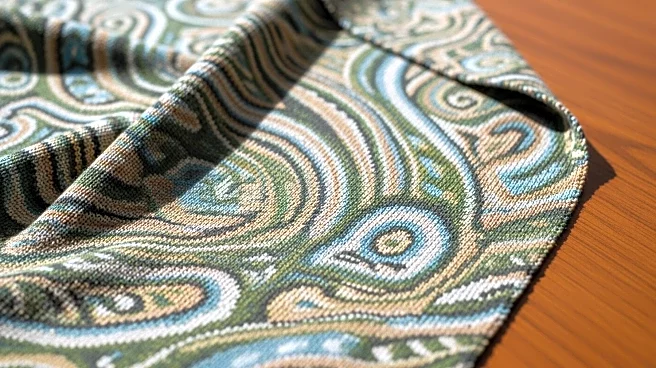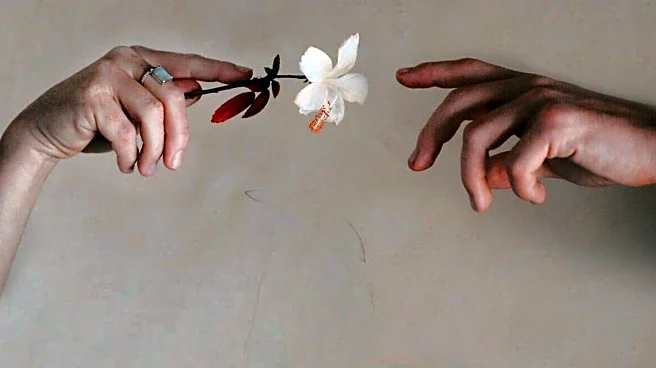What's Happening?
Alanui, a fashion brand known for its knitwear, has launched its Spring 2026 collection inspired by Polynesian themes. Creative Director Carlotta Oddi drew inspiration from 'The Blue Lagoon,' a novel and its cinematic
adaptations, to explore new textures and designs. The collection features motifs such as palm trees, frangipani, and hibiscus flowers, integrated into wool cardigans and other knitwear. Sustainable materials like recycled cashmere are used, and the designs include elements like mother-of-pearl and handmade embroideries. This collection marks a significant step for Alanui, as it is the first to be distributed directly by the label from its Milan-based showroom after regaining full control from New Guards Group.
Why It's Important?
The launch of Alanui's Spring 2026 collection highlights the brand's commitment to sustainability and innovation in fashion. By using recycled materials and exploring new design techniques, Alanui is setting a precedent for environmentally conscious fashion. The collection's direct distribution from Milan signifies a strategic shift in the brand's operations, potentially increasing its market presence and influence. This move could impact the luxury knitwear market, encouraging other brands to adopt similar sustainable practices and direct distribution models.
What's Next?
Alanui's decision to distribute its collection directly from Milan may lead to increased brand visibility and customer engagement. The fashion industry will likely watch closely to see how this strategy affects Alanui's sales and market position. As the brand continues to innovate with sustainable materials and unique designs, it may inspire other fashion houses to follow suit, potentially leading to broader industry shifts towards sustainability and direct distribution.
Beyond the Headlines
Alanui's Polynesian-inspired collection not only showcases creative innovation but also reflects a cultural appreciation and exploration of global themes. This approach may influence fashion trends, encouraging designers to incorporate diverse cultural elements into their work. The use of sustainable materials aligns with growing consumer demand for eco-friendly products, potentially driving long-term changes in production practices across the industry.













